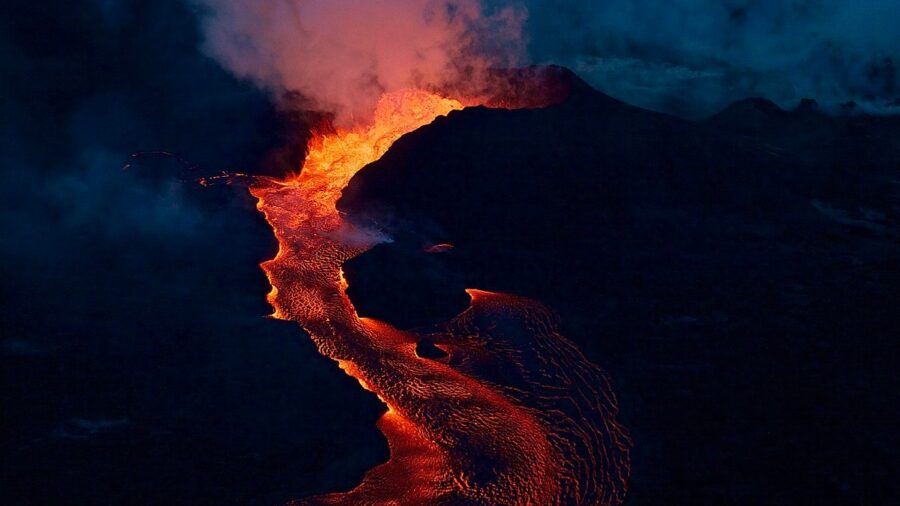A Massive Volcano Eruption Is Happening In Hawaii
Kilauea, the world's most active volcano, is erupting and from a safe distance, it looks amazing.

Hawaii’s most active volcano is erupting again following a short and tame eruption earlier this year, which ran from January to March, but this one is already dramatically different. Gizmodo was one of the first to report on the volcanic activity, which started in the early morning hours, 4:44 a.m. Hawaiian time and has already caked the island in ash and dust. Thankfully, the activity is confined to the volcano zone, and at the moment, there is no immediate threat to life and property.
USGS Volcanoes on Twitter has been following the Kilauea eruption, providing amazing video footage of the lava flows, and vertical spews of molten rock, referred to as “fountaining.” The crater’s base can be seen cracking apart as magma boils to the surface, creating lava flows on the surface. A very active volcano, Kilauea’s three-month pause ended following reports of seismic activity and researchers able to watch the magma moving around under the surface.
The plumes of lava being launched skyward from the volcano summit look amazing when viewed from a healthy distance, but there’s the potential for disaster at any moment. A previous eruption by Kilaeua in 2018 was the largest in 200 years, adding a square mile of land to the island from the rapidly cooling lava flows. What makes the eruption going on right now so dangerous is that it could escalate anytime.
A more distant video highlights the current danger, not from lava, but the ash and dust producing “vog” (volcanic smog). Residents of Canada and the northern United States are all too aware of the dangers of smoke and ash from wildfires, but vog can be spewed skyward for up to months at a time. Eyjafjallajökull, a volcano that erupted in Iceland in 2010, disrupted air travel over the entire continent of Europe through a cloud of ash the size of entire countries.
As dangerous as the situation could be, there’s something fascinating about watching a volcano spew lava; granted, it requires a very safe distance to enjoy. Residents of Hawaii’s Big Island have been warned that the outer rift zones aren’t showing signs of activity right now, which means, unlike the 2018 eruption, rivers of lava won’t be flowing into residential zones. On the bright side, Mauna Loa, the world’s largest active volcano, isn’t the one erupting this time.
The Hawaii Volcano National Park Service has shared a volcano eruption viewing guide. While the eruption is confined entirely to the caldera, it’s mostly safe for observation with trained volcanologists on hand that will issue warnings when they detect any more massive movements under the surface that might threaten human life. The problem is that sometimes, they may only have minutes of warning.
Given the many past eruptions of Kilauea, everyone in the area has plenty of experience living around one of the world’s most active volcanos. Ideally, the volcano summit will contain all of the erupting lava while the ash and vog are quickly carried out over the Pacific Ocean by the wind, removing it from the heavily populated Big Island. Everyone is safe for now, but the Earth can move in unexpected ways, and the USGS is actively monitoring the developing situation, which might forever change the island.










